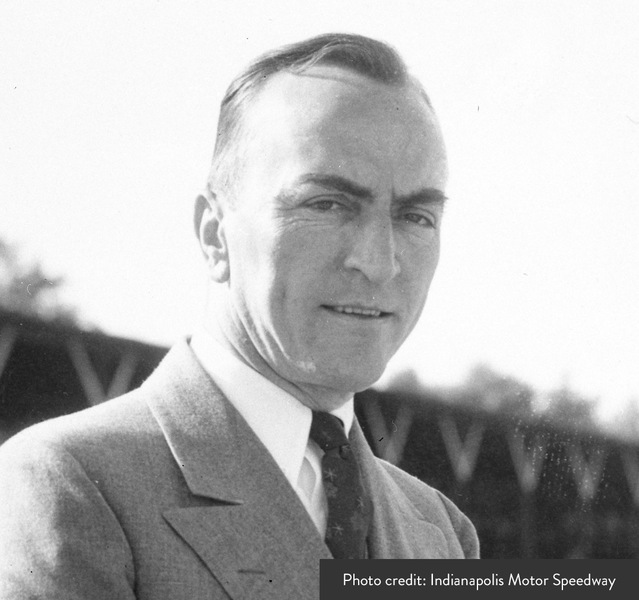
Rick (as he preferred to be called instead of "Eddie") was born in Columbus, Ohio in 1890. His fascination with engines began there as a teenager and in 1906 he went to work for Lee Frayer, a pioneer auto builder and racer. That year Rick accompanied Frayer as a riding mechanic in the Vanderbilt Cup Race on Long Island, New York, and later was a relief driver for Frayer in the 1911 Indianapolis race, in which they placed eleventh.
By 1912, Rickenbacker had decided to be an automobile race driver full time: "I wanted to drive good cars fast, to pit my automobile knowledge and driving skill and plain old guts against the world's best." He raced Frayer's car, the "Red Wing," at Indianapolis that year, running in fourth place until a crankshaft bearing failed and eliminated him from the race. That summer Rick went to work for Desenberg as a mechanic, and ultimately became the captain of that company's race team. Press reports of the time declared that there was no more daring and aggresive driver than Rickenbacker, with a "savage style of driving" who was also lucky. By 1913 he had wrecked five cars and walked away each time unharmed.
In 1915, Rick became the racing manager for Maxwell cars. When Maxwell abandoned racing, Rick used his own funds as well as money borrowed from the "Four Horsemen" who started the Indianapolis Speedway (Carl G. Fisher, James A. Allison, Frank Wheeler and Arthur Newly), to field his own race team.
Rick was noted for paying attention to detail, memorizing the race track and situations, and having a strategy. He would practice on a track until he claimed to know every pebble on it. After witnessing an accident during one race, he memorized the location of pieces of wreckage and was able to maintain speed and drive through the fire and smoke avoiding the debris on the track. It was this painstaking attention to detail and practice that enabled him and his crew to perform a thirty-two second pit stop, changing all tires and wheels and adding gas and oil. That quickness in the pits allowed Rick to jump back in the car (after changing the right rear wheel and tire), return to the race and take the lead from Ralph DePalma and win a 300 mile race in Tacoma, Washington in 1916.
Rickenbacker's racing career included victories in California, Iowa, Nebraska, New York, as well as special races at Indianapolis. In his final year of racing in 1916, Rick's life time point total was third overall under the AAA point system.
Rick joined the American Expeditionary Force in 1917 and was attached to the newly formed Aero Pursuit Squadron. The insignia on the squadron was Uncle Sam's stove pipe hat with stars and stripes in a ring, symbolizing the American custom of throwing a hat into the ring as a challenge. His military career as a pilot is legendary, with twenty-six recorded air victories. As a result, he earned the title of "American Ace of Aces," and became known as "Captain Eddie."
In 1921, he formed the Rickenbacker Motor Company, using the hat-in-the-ring insignia as its emblem. The company manufactured stylish, mid-priced cars, but was not successful and closed in 1927. Its demise was due, in part, to the introduction of four-wheel brakes which were rejected by the industry for marketing reasons.
On November 1, 1927, Edward V. Rickenbacker assumed control of the Indianapolis Motor Speedway. His accomplishments at Indy included arranging for the first live radio broadcast of the Memorial Day 500 race. He closed the Speedway in 1941 for the duration of World War II, and after the war sold it to Anton Hulman, Jr.
Rick became general manager of Eastern Airlines in 1935, and purchased it in 1938. In September of 1922, he married Adelaide Frost Durant, originally of Grand Rapids, Michigan. They had two sons, David Edward and William Frost. Edward V. Rickenbacker died in Zurich, Switzerland in 1973, having never had a driver's license.